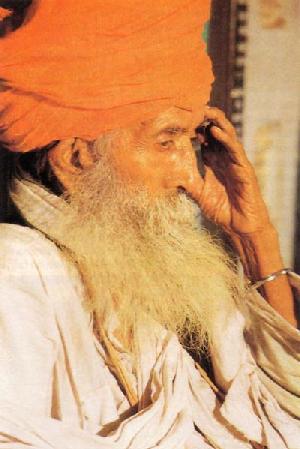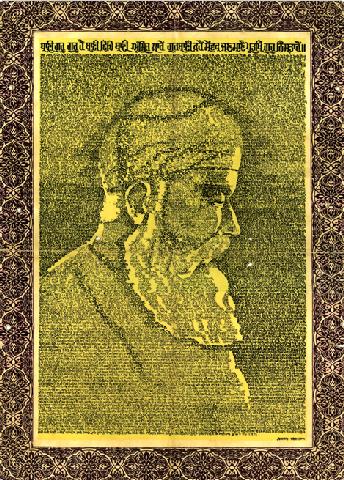 At the surface level there can be some reason to believe that culture is not related to any of the aspects of religion. In fact some thinkers also believe that culture goes against religion.
At the surface level there can be some reason to believe that culture is not related to any of the aspects of religion. In fact some thinkers also believe that culture goes against religion.
To understand this relationship let us first try to first feel the heartbeat of the culture of Punjab. We have to feel the emotion that is carried within the music, poetry, language, values and beliefs of our land. Sometimes we tend to condemn our native culture by looking at the status of the women in the society and thereby infer that our culture is probably responsible for the status of women in the society and especially within the religious institutions. What we forget here is that male chauvinism is an evil product of the mind and it is not really part of our culture. Similarly many western scholars point out the status of women in Islam and associate polygamy as its debatable aspect there by relating to the cultures in which Islam flourishes. These thinkers grossly ignore the responsibility associated with taking care of the widows and poverty-stricken women during the medieval period and mistakenly connect it to physical lust. One should try to examine the spirit of Islam in the light of responsibly towards all downtrodden women and how the Prophet Mohammad was deeply moved by the conditions of poor peasants when there was no one to take care of widows and when female infanticide was the order of the day.
Nowhere in the world is there a culture of the land that has within its folk songs or any poetry values that undermine the status of the women. Therefore we shall attempt to comprehend the beauty of the culture of Punjab while examining the higher meaning of the culture, its warmth and the softness it provides to mankind. We shall try to examine the interconnection from the heart of Puran Singh in his composition ‘The Spirit of Oriental Poetry’ where he reveals to us this higher meaning and the tenderness of our culture.
 Before we go further, let us try to feel the culture of Punjab in the love stories of ancient Punjab. Puran Singh addresses Ranjha as a Sikh of Guru. The love of Ranjha is purely the love of Soul. It is beyond physical attainment by the body. The Spirit of Sohni is in deep remembrance of her beloved and she does not fear the death of her body while she dives in the river so that her soul can meet with her beloved. The most that the river can hold back is the bones and flesh, but the soul cannot be held. The bird cannot be locked in any cage. Similarly, many holy souls of Punjab have been in fervent love with the Almighty. They have cried, high with love, even by embracing the trees of Punjab. It is because they see divinity in every particle of that land that their spiritual love is not able to distinguish between various objects of physical existence. For them the whole universe is the Almighty’s creation and His presence is realized everywhere.
Before we go further, let us try to feel the culture of Punjab in the love stories of ancient Punjab. Puran Singh addresses Ranjha as a Sikh of Guru. The love of Ranjha is purely the love of Soul. It is beyond physical attainment by the body. The Spirit of Sohni is in deep remembrance of her beloved and she does not fear the death of her body while she dives in the river so that her soul can meet with her beloved. The most that the river can hold back is the bones and flesh, but the soul cannot be held. The bird cannot be locked in any cage. Similarly, many holy souls of Punjab have been in fervent love with the Almighty. They have cried, high with love, even by embracing the trees of Punjab. It is because they see divinity in every particle of that land that their spiritual love is not able to distinguish between various objects of physical existence. For them the whole universe is the Almighty’s creation and His presence is realized everywhere.
May we, as Sikhs, have the same devotion and love for our Guru as that of Sohni for Mahiwal. Their love has to be love of the Soul. No other place has comparable love stories in their culture and this is one of the reasons whay the people of Punjab are born martyrs. Only when the Sikh has such higher consciousness, drenched in the love of his Guru, can he watch his body torn by a saw with his face towards his Beloved.
As Sikhs we take spiritual experiences from all that is happening within and around us. The culture of Punjab is based on imagination of highest order. We bring the most creative part of our spiritual orientation from our inner core of strong imagination, which is also highly prevalent in “Suhags”, and other folk poetry of Punjab. There is something very deep about our music and our soul is in deep harmony with it. This deep harmony is not explainable. It simply cannot be put into words. But one sign that we get from our spirit is that we as Sikhs are always enthusiastic about sacrifice and possess a tendency to be in high spirits (Chardi Kalaa) even in times of adversity. To a certain extent this is definitely a part of our religion. So sometimes we cannot distinguish where our culture actually becomes a part of our prayer.
Guru Gobind Singh says to Bhai Dalla, “ One cannot be a valiant without a strong imagination. Your soldiers have to win over the pain with imagination in order to be valiant.”
The strongest criticism of current cinema is that it is somehow killing our imagination. Our creative parts always exist in the inner love for the Infinite, which is getting deeply affected by the current dramas in our media. But this is separate discussion and will not be included in the current subject matter.
Let us try to examine this from a different perspective. What was the religion in Punjab before Guru Nanak? Did that mean that there was no path leading mankind to Almighty before Guru Nanak? Why did the Almighty send Guru Nanak to Punjab? Why is Gurbani written in Ragas? Why do we sing Gurbani with the music?
 The answers to all these questions cannot be just “coincidence.” Before Guru Nanak assumed the human form He always existed in the form of prayer. The Shabad has existed much before Guru Nanak in our culture, in our poetry, in our music, in the Hymns of Baba Sheikh Farid and Bhagat Namdev and others. In the form of a human body the Shabad took its birth in the year 1469. Of course the Guru Granth Sahib was given a final compilation during the Guru’s period, but the hymns of the Guru Granth Sahib are very much extant in our history before that.
The answers to all these questions cannot be just “coincidence.” Before Guru Nanak assumed the human form He always existed in the form of prayer. The Shabad has existed much before Guru Nanak in our culture, in our poetry, in our music, in the Hymns of Baba Sheikh Farid and Bhagat Namdev and others. In the form of a human body the Shabad took its birth in the year 1469. Of course the Guru Granth Sahib was given a final compilation during the Guru’s period, but the hymns of the Guru Granth Sahib are very much extant in our history before that.
The interconnection is very deep and in fact the culture took its most complete form when it transcended into Sikhi. This where we understand that the culture of Punjab was waiting for Sikhi in order to become complete, and to a certain extent our culture was the predecessor of our Religion.
 The set system of beliefs, values and attitudes also called the culture of a society is given higher dimensions with the love of Almighty. When, Guru Nanak gave us the culture of hard work with creativity as its highest character, a new way of life was born in Punjab. He himself tilled the land for many years to establish kirt and make it a part of our spirit.
The set system of beliefs, values and attitudes also called the culture of a society is given higher dimensions with the love of Almighty. When, Guru Nanak gave us the culture of hard work with creativity as its highest character, a new way of life was born in Punjab. He himself tilled the land for many years to establish kirt and make it a part of our spirit.
The Shabad Guru as embodied in the Guru Granth Sahib is compiled in musical ragas. Instead of only reading through them, the singing of our hymns is required because it generates the right feeling in the heart, mind and soul of the listener.
The musical composition of Azan in Islam, the carols of the Christian church all have a definite correlation of praying with singing. This singing was prevalent in many regions much before the Prophets came into existence. The religion adds on to the culture and a great system is produced that exhibits the presence of the Almighty in every particle of existence.
Many hymns in the Guru Granth Sahib like “Asa di Var” are to be sung in the folk tune of Tunde Asraja, others in Laila Majnuma’s tune etc. Similarly, Raag Tukhari belongs to folk raag in Afganistan. As said by Puran Singh, “One Hymn in Guru Grantha has the same sculptured idea in it, as is inlaid in the whole of Guru Grantha”. The Guru’s Word (Shabad) cannot be seen under a microscope and further dissected to understand its meaning. And he further adds, “Poetry has meaning, but the highest poetry or music has no meaning, it has a subjective presence of the beautiful. It is the setting of a right spiritual attitude in us.” Thus the Shabad transcends poetry into a higher aura of culture of kindred Spirits.
To sum up, culture should not be seen as a substance with physical characteristics like dress, man-woman relationships, etc. Nor should the current TV singers, or so-called modern artists, be associated with the culture as their entire focus is on becoming more popular while gathering more material wealth. They are unable to bring the rain of love on humanity, which is a part of our original folk poetry.
Beyond all this, there is always a culture of the soul that creates the enthusiasm of belonging. The passion with which our souls belong to Guru is the culture of our soul as Sikhs. Visualizing the spiritual angle in every bit of life, in every physical incidence, is our true culture: the culture of the Soul.
 The birth of a child is as divine a creation as the sprouting of a tiny plant from a seed. The excitement for the beloved husband in folk poetry is equivalent to the enthusiasm in the eyes of Baba Farid for his beloved Almighty. It is also the same grief in the eyes of Guru Arjun while in Lahore. It is the same sorrow that Guru Angad showed when he was kept waiting for long hours for Guru Nanak when he left him in the fields of Khadur. Through that longing Guru Nanak was compelled to come back to him. How ardent was this soul while calling on the spirit of Guru Nanak to come back?
The birth of a child is as divine a creation as the sprouting of a tiny plant from a seed. The excitement for the beloved husband in folk poetry is equivalent to the enthusiasm in the eyes of Baba Farid for his beloved Almighty. It is also the same grief in the eyes of Guru Arjun while in Lahore. It is the same sorrow that Guru Angad showed when he was kept waiting for long hours for Guru Nanak when he left him in the fields of Khadur. Through that longing Guru Nanak was compelled to come back to him. How ardent was this soul while calling on the spirit of Guru Nanak to come back?
So, if we have to appreciate Sikhi in true meaning and essence, we must appreciate our culture in its true spirit or else we shall only observe the corporeal structure of flesh and bones while the ras, the life spirit, shall be missing from it.
Waheguru ji ka Khalsa, Waheguru Ji Ki Fateh!

